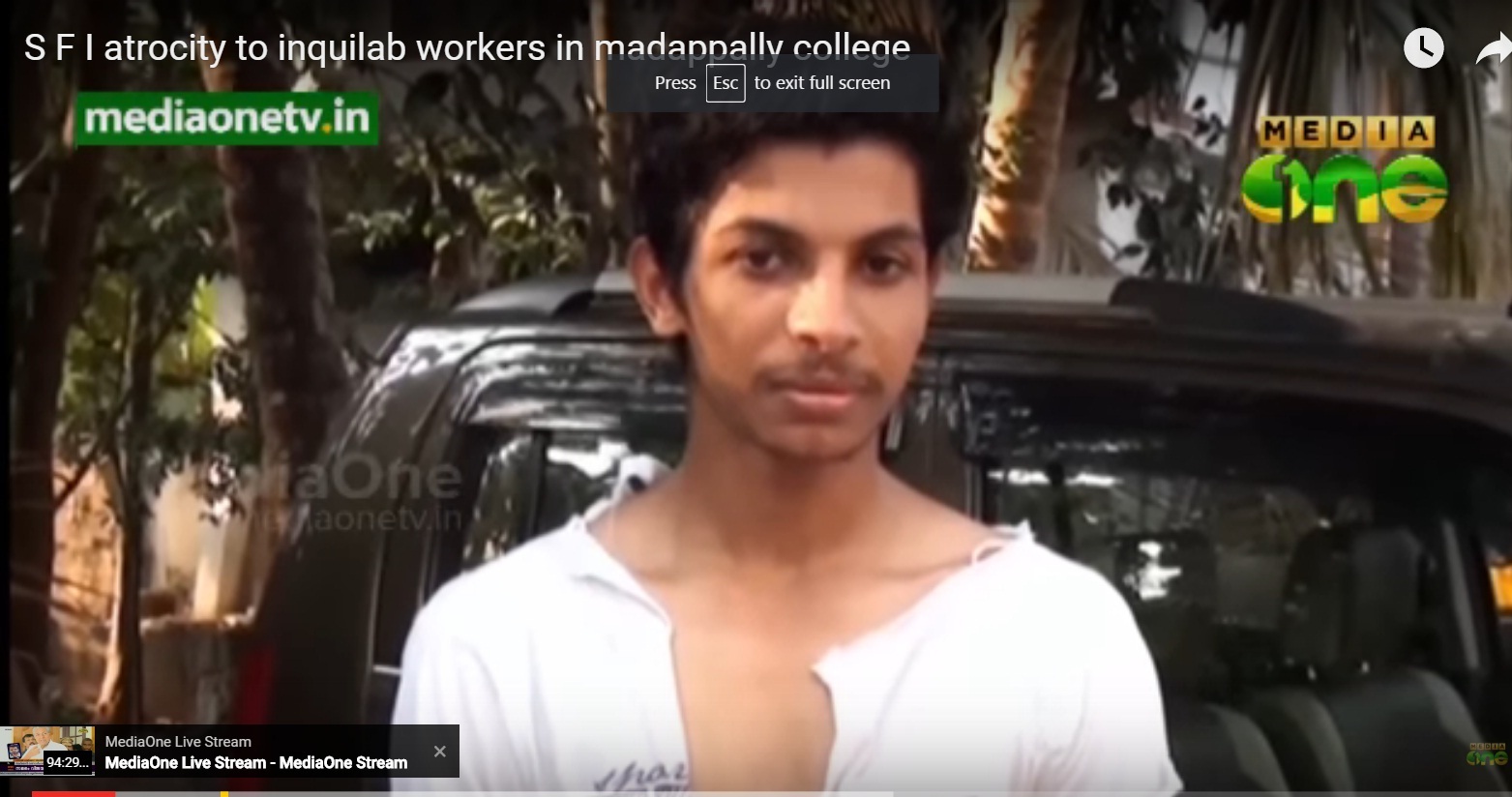Sree Govind Bharatvaraj
From Non-Brahmin Politics to Ambedkarite Buddhism: Reading Blue Star
Jayakumar’s Blue Star makes a critique of the non-Brahmin politics and insists Ambedkarite Buddhism as a notion to unite Dalits and intermediate castes in the Tamil state.
Neelam Production (film Company of Pa. Ranjith) has released its recent film, Blue Star (2024), directed by S. Jayakumar. The film uses cricket as a trope to communicate an important political statement. The story revolves around two characters, Ranjith and Rajesh. Ranjith is a Dalit who lives in a cheri(slum). Rajesh is an intermediate caste who lives in oor(settlements of non-Dalits). Though both live in the same village, they are divided by the caste system. Ranjith leads the cricket team of Dalit players named “blue star.” Rajesh leads the team of intermediate-caste players, named “alpha boys.” Both teams are depicted as rival groups in the village. But both have the common goal of winning a tournament match for the MCF cricket club. Since they are divided by the caste system, they could not team up and compete in the tournament. A Dalit character named Immanuel will struggle and unite both intermediate castes and Dalits to win the cricket match at the MCF club. The film looks like a regular cricket movie, but it has serious political content to discuss. The movie makes a critique of the non-Brahmin politics in the Tamil state for its lack of adequacy in addressing the caste question. It then endorses Ambedkarite Buddhism as a solution to the caste system and a tool to unite the Dalits and the intermediate castes in Tamil land.
The non-Brahmin politics of the film can be understood by observing the Ravanakulam (Ravana clan) song in the film. The song represents the ethnicity of the people it revolves around. It is about the non-Brahmins—Dalits and intermediate castes. The lyrics of the song go like, “Cross your legs. You belong to the clan of Ravana. It is time you rise. Do it right away.” Ravana symbolism in Tamil Nadu was politicized by the Dravidian movement in the mid-20th century. It was promoted as a common Shudra identity of the Tamil non-Brahmins to stand against the Brahmins (Aryans) in the socio-cultural and political realm. The symbol was intensely advocated by the Dravidar Kazhagam and the self-respect movement of Periyar E. V. Ramasamy. In the later stages, the intensity of this symbolism began to diminish when the Dravida Munnetra Kazhagam (DMK) dropped the agenda of Dravida Nadu (the Dravidian state) from their party program. During the ruling of the DMK leaders—C. N. Annadurai and KalaignarKarunanithi—this symbolism was not adequately promoted as it was done in earlier movements. However, the Ravana symbol still exists as an effective political memory and an iconic reference to the non-Brahmin politics in the state.
In the film Blue Star, what is essential to observe is that the Ravana symbolism is used as a critique of non-Brahmin politics. The film narration has clearly represented the existence of the caste system, the issues of discrimination, and the rivalry between intermediate castes and Dalits. In that case, the song becomes a critic, raising questions: if both Dalits and intermediate castes belong to the Ravana clan, then why do they live in different settlements, oorand cheri? Why do Dalits face discrimination if they are also part of the Ravana clan? Why could intermediate castes and Dalits not collaborate equally, even though they belong to the same clan? The Ravana symbolism in the film is crucially placed to elucidate the inefficacy of non-Brahmin politics in addressing caste concerns and the Dalit question.
In the film narration, both the “Blue Star” and the “Alpha Boys” wish to win a tournament in the MCF cricket club. This helps them to develop their cricket career and future prospects. But, the MCF club is dominated by Brahmin league players. It is depicted as a site of Brahmin supremacy. In the imagery of the MCF club banner, on one side there is a cricket logo and on the other side there is an icon of “Lord Ram with bow and arrow,” a symbol of Brahmin pre-eminence. But the political stand of the film is clear. It clearly suggests on winning the tournament and not on defeating the Brahmins. And to win the match, Dalits and intermediate caste must unite together. For uniting them, director Jayakumar uses Ambedkarite Buddhism as a political notion.
The film is replete with Dalit symbolism. Pictures, statues, and paintings of Ambedkar are overtly and intensely depicted in several scenes. Notably, images of IyotheeThass and Buddha are frequently represented in the film narration. IyotheeThass was the harbinger of the anti-caste Buddhist movement in the Tamil state during the nineteenth century. Similar to Ambedkar, IyotheeThass saw Buddhism as an emancipatory religion and believed that it would pave the way towards a casteless society.
In the movie, the character Immanuel is crucial to observe. It is Immanuel who struggles to unite the Dalits and intermediate castes to compete in the MCF tournament. Immanuel is a Dalit who is influenced by Ambedkarite Buddhism. In a scene where Immanuel is talking to Dalits and intermediate castes on the cricket field, a tall statue of Ambedkar is placed directly opposite Immanuel. In another scene, “alpha boys” team captain Rajesh and his players will hesitate to collaborate with the Dalit players. One intermediate-caste player will make a caste-discriminatory remark about the Dalit players. Immanuel observes this hatred and says to the intermediate castes, “Hatred leads only to disaster, but patience will teach many things.”After this scene, the intermediate caste Rajesh is shown as standing under a peepal tree (bodhi tree)and seriously thinking about the words of Immanuel. Rajesh then changes his mind and decides to join with the Dalits. When Rajesh moves from that place, the camera zooms to the peepal tree branches that shine under the rays of the bright sun. The scene is a clear reference for driving the intermediate castes towards the path of Buddhism and anti-casteism. A couple of scenes later, the intermediate caste Rajesh will join with the Dalit captainRanjith and travel with him on a bike. When they both travel, a large wall painting of Ambedkar, along with the imagery of IyotheeThass and Buddha, is depicted in the streets. This is a crucial political statement in the film, which stresses the significance of Ambedkarite Buddhism in uniting Dalits and intermediate castes.
In the climax, both “alpha boys” and “blue star” will jointly participate and win the tournament. During the last over, when Dalit player Rajesh hits the ball to the boundary line, it strikes the Brahmin captain, Nandagopalan, causing him severe injury and bleeding.
The Dalit player Ranjith runs to save the Brahmin and calls the intermediate caste Rajesh to help. Here, the Dalit humanism of Ambedkarite Buddhism inclusively embraces the intermediate caste and also the Brahmin. In the end, Dalits and intermediate castes will jointly play on their village grounds, and here the camera zooms in on the players, shows the nearby “peepal tree,” and then tilts up to the bright “blue sky.”
~~~
Dr. Sree Govind Bharatvaraj is working as a guest faculty member at the Central University of Tamil Nadu, Thiruvarur. He is an ardent researcher whose work broadly focuses on anti-caste studies, social movements, and caste and Dalit representation in popular culture. He currently works on anti-caste cinema trends, both in Tamil films and in Indian cinema. He has published in esteemed journals like South Asian Popular Culture and South Asian Review.










